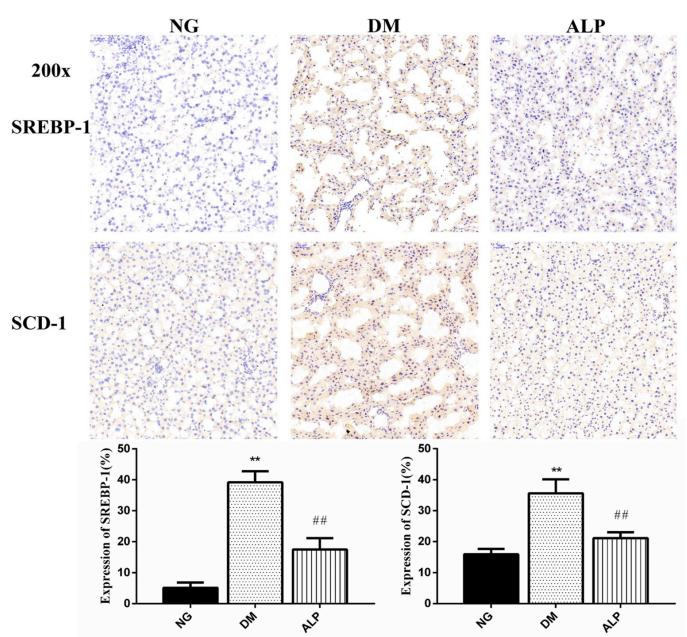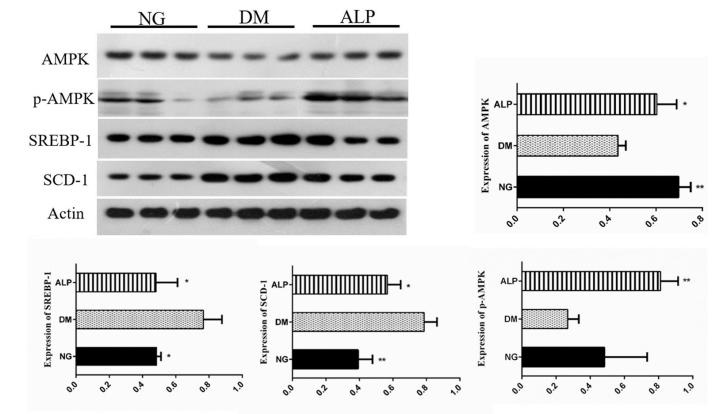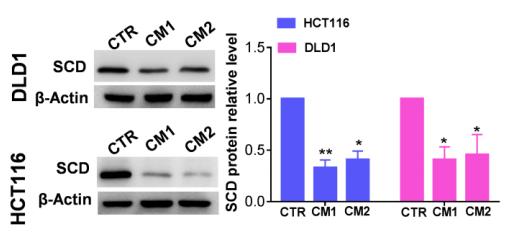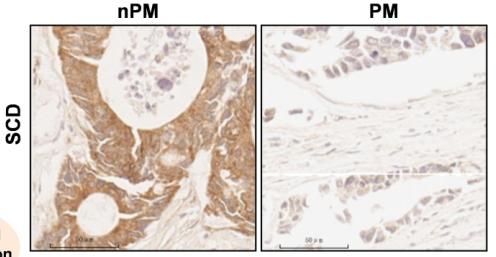SCD1 Antibody - #DF13253
| Product: | SCD1 Antibody |
| Catalog: | DF13253 |
| Description: | Rabbit polyclonal antibody to SCD1 |
| Application: | WB IHC IF/ICC |
| Cited expt.: | WB, IHC |
| Reactivity: | Human, Mouse |
| Prediction: | Pig, Bovine, Sheep, Dog |
| Mol.Wt.: | 41kDa; 42kD(Calculated). |
| Uniprot: | O00767 |
| RRID: | AB_2846272 |
Related Downloads
Protocols
Product Info
*The optimal dilutions should be determined by the end user. For optimal experimental results, antibody reuse is not recommended.
*Tips:
WB: For western blot detection of denatured protein samples. IHC: For immunohistochemical detection of paraffin sections (IHC-p) or frozen sections (IHC-f) of tissue samples. IF/ICC: For immunofluorescence detection of cell samples. ELISA(peptide): For ELISA detection of antigenic peptide.
Cite Format: Affinity Biosciences Cat# DF13253, RRID:AB_2846272.
Fold/Unfold
ACOD_HUMAN; Acyl-CoA desaturase; Delta(9)-desaturase; Delta-9 desaturase; Delta-9-Desaturase; FADS5; Fatty acid desaturase; PRO0998; SCD 1; SCD; SCD1; Stearoyl-CoA desaturase;
Immunogens
A synthesized peptide derived from human SCD1, corresponding to a region within N-terminal amino acids.
Detected in fetal liver, lung and brain. Highly expressed in adult adipose tissue, and at lower levels in adult brain and lung.
- O00767 ACOD_HUMAN:
- Protein BLAST With
- NCBI/
- ExPASy/
- Uniprot
MPAHLLQDDISSSYTTTTTITAPPSRVLQNGGDKLETMPLYLEDDIRPDIKDDIYDPTYKDKEGPSPKVEYVWRNIILMSLLHLGALYGITLIPTCKFYTWLWGVFYYFVSALGITAGAHRLWSHRSYKARLPLRLFLIIANTMAFQNDVYEWARDHRAHHKFSETHADPHNSRRGFFFSHVGWLLVRKHPAVKEKGSTLDLSDLEAEKLVMFQRRYYKPGLLMMCFILPTLVPWYFWGETFQNSVFVATFLRYAVVLNATWLVNSAAHLFGYRPYDKNISPRENILVSLGAVGEGFHNYHHSFPYDYSASEYRWHINFTTFFIDCMAALGLAYDRKKVSKAAILARIKRTGDGNYKSG
Predictions
Score>80(red) has high confidence and is suggested to be used for WB detection. *The prediction model is mainly based on the alignment of immunogen sequences, the results are for reference only, not as the basis of quality assurance.
High(score>80) Medium(80>score>50) Low(score<50) No confidence
Research Backgrounds
Stearyl-CoA desaturase that utilizes O(2) and electrons from reduced cytochrome b5 to introduce the first double bond into saturated fatty acyl-CoA substrates. Catalyzes the insertion of a cis double bond at the delta-9 position into fatty acyl-CoA substrates including palmitoyl-CoA and stearoyl-CoA. Gives rise to a mixture of 16:1 and 18:1 unsaturated fatty acids. Plays an important role in lipid biosynthesis. Plays an important role in regulating the expression of genes that are involved in lipogenesis and in regulating mitochondrial fatty acid oxidation (By similarity). Plays an important role in body energy homeostasis (By similarity). Contributes to the biosynthesis of membrane phospholipids, cholesterol esters and triglycerides (By similarity).
Endoplasmic reticulum membrane>Multi-pass membrane protein.
Detected in fetal liver, lung and brain. Highly expressed in adult adipose tissue, and at lower levels in adult brain and lung.
The histidine box domains are involved in binding the catalytic metal ions.
Belongs to the fatty acid desaturase type 1 family.
Research Fields
· Environmental Information Processing > Signal transduction > AMPK signaling pathway. (View pathway)
· Metabolism > Lipid metabolism > Biosynthesis of unsaturated fatty acids.
· Metabolism > Global and overview maps > Fatty acid metabolism.
· Organismal Systems > Endocrine system > PPAR signaling pathway.
References
Application: WB Species: human Sample: DLD1 and HCT116 cells
Application: IHC Species: human Sample: DLD1 and HCT116 cells
Application: WB Species: Mouse Sample:
Application: WB Species: Mouse Sample:
Application: IHC Species: Mouse Sample:
Application: WB Species: Human Sample: adipose tissue
Restrictive clause
Affinity Biosciences tests all products strictly. Citations are provided as a resource for additional applications that have not been validated by Affinity Biosciences. Please choose the appropriate format for each application and consult Materials and Methods sections for additional details about the use of any product in these publications.
For Research Use Only.
Not for use in diagnostic or therapeutic procedures. Not for resale. Not for distribution without written consent. Affinity Biosciences will not be held responsible for patent infringement or other violations that may occur with the use of our products. Affinity Biosciences, Affinity Biosciences Logo and all other trademarks are the property of Affinity Biosciences LTD.














